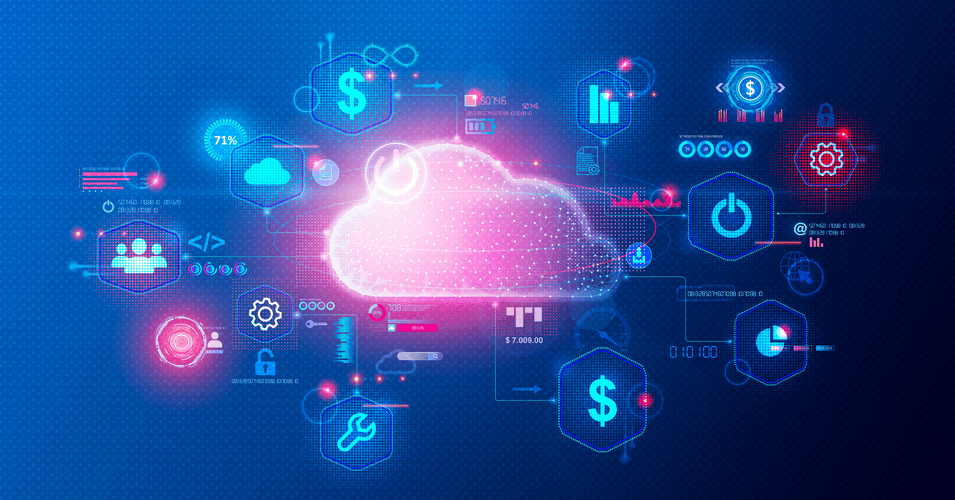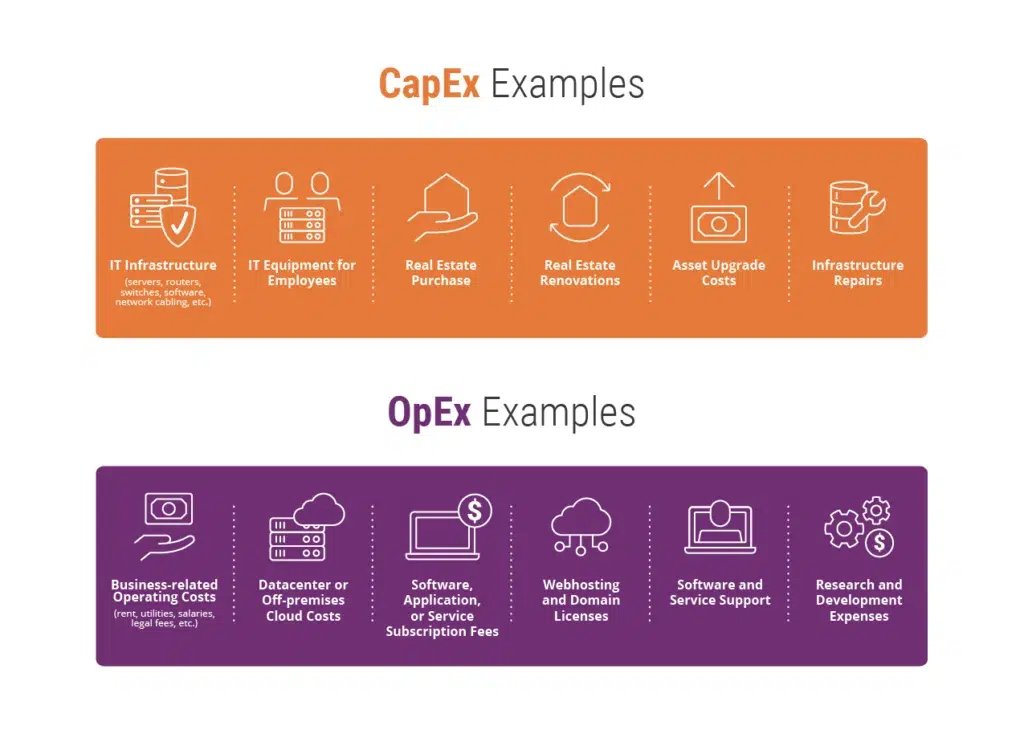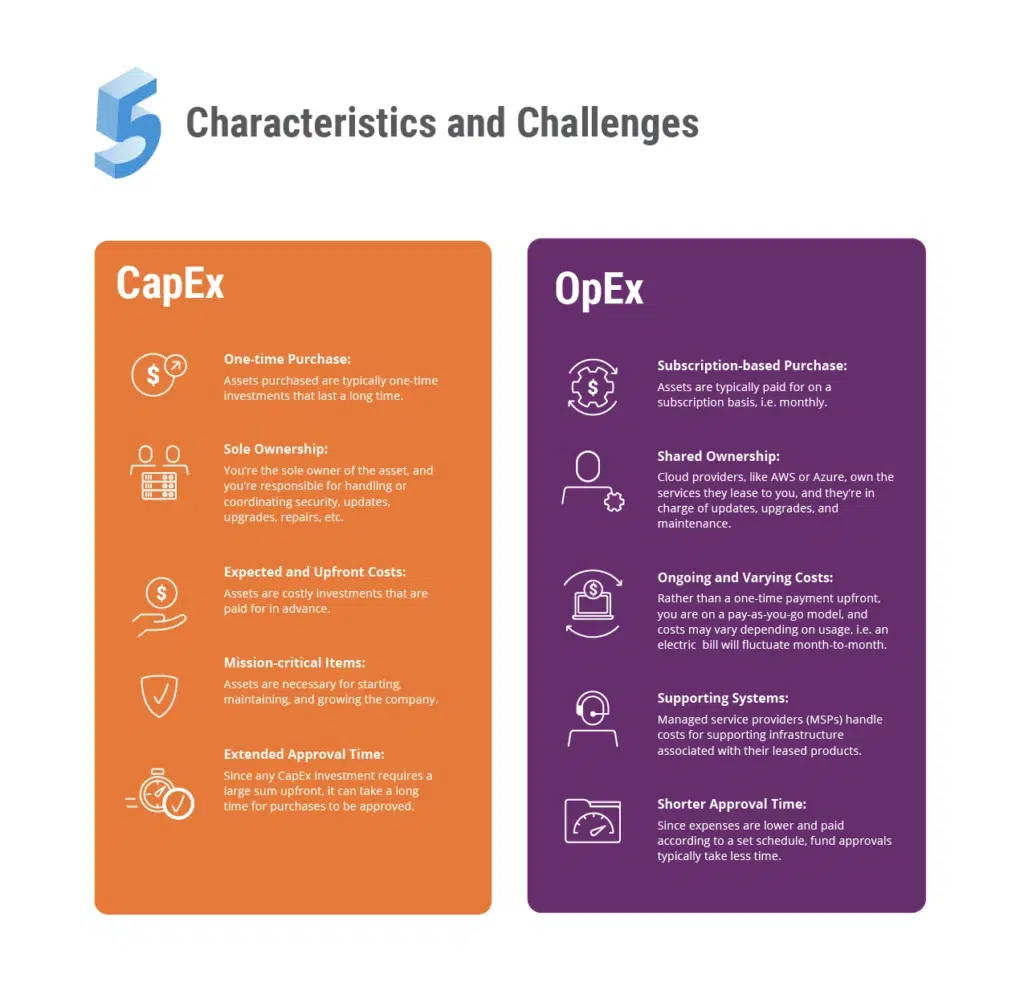
Although most organizations are known for being specialists in their respective industries, they all share the same, lesser-known talent: juggling.
To keep things growing and running smoothly, businesses of all sizes need to be able to juggle a seemingly endless number of responsibilities – two of the big ones being capital expenditures (CapEx) and operating expenses (OpEx). But what exactly are CapEx vs. OpEx cloud financial models?
In short: cloud capital expenditures are large investments in mission-critical fixed assets whereas cloud operating expenses are the costs associated with day-to-day operations.
With worldwide IT spending expected to grow >5% in the next year, more businesses are taking a closer look into their CapEx vs. OpEx cloud portfolios, and analyzing how implementing IT cost optimization in either can affect their budgets.
What Is CapEx In Cloud Computing?
CapEx in cloud computing is like the traditional CapEx model briefly outlined above. However, in this case, capital expenditures are all cloud-related and refer to the costs the organization must incur to purchase fixed assets that will offer ongoing, long-term benefits well past the current tax year.
Typically, these assets are large, one-time investments that the company will solely own after the transaction is complete. Since these are high-dollar, high-consideration purchases, there’s plenty of planning (not to mention a lengthy approval process) to be completed before the asset is acquired.
It can take some time before a company can utilize its CapEx investment. For example, an organization may complete the real estate transaction for a data center, but they won’t be able to use the asset immediately because they still need to build out the space.
6 Examples Of CapEx Assets In Cloud Computing
Also referred to as property, plant, and equipment (PP&E), popular examples of cloud CapEx items are:
- IT infrastructure (servers, routers, switches, software, network cabling, etc.)
- IT equipment for employees
- Data center real estate purchase
- Real estate renovations
- Asset upgrades
- Infrastructure repairs
Benefits And Challenges Of CapEx Spending In Cloud Computing
Some key features that separate CapEx in cloud computing include it being an investment strategy for mission-critical items that exist on-premises and, regarding taxes, assets are deducted as they depreciate over time. And, as with any financial model, there are unique benefits and challenges when taking a CapEx approach to cloud spending.
CapEx Benefits
- Expected costs: Although costs associated with CapEx IT investments can be daunting, they’re expected and consistent, which is beneficial. This allows organizations to budget accordingly.
- Asset ownership: The organization buying the asset is the sole owner.
- Expenditure stability: When using a CapEx model, businesses know their associated costs, and can create models that forecast costs as needed.
- Full control: Since the company owns the hardware or other asset, they have complete control over access, security, and updates.
CapEx Challenges
- Large upfront costs: Since you need a lot of cash to get started, it can be challenging to allocate funds toward other much-needed business expenses or revenue-generating initiatives. Additionally, this can serve as a barrier to entry for smaller businesses lacking the available capital.
- Big commitment: CapEx investments tie-up a chunk of cash. This can make things more difficult if a future business decision causes a change in direction as your company grows or IT technologies advance.
- Extended approval processing time: When making such expensive purchases, the budget estimation, consideration, negotiation, approval, and final fund release processes can take a significant amount of time.
- Full responsibility: By being the primary owner, the business takes on full responsibility for maintenance, repairs, upgrades, additional costs associated with supporting infrastructure, and unexpected expenses, such as suddenly replacing or repairing critical infrastructure.

What Is OpEx In Cloud Computing?
OpEx in cloud computing is similar to a traditional OpEx strategy. However, as with CapEx, all operating expenses support public cloud, private cloud, hybrid cloud, and/or multitenant cloud initiatives. Rather than revolving around a large, up-front bill, OpEx purchases are typically pay-as-you-go or subscription-based. With that, OpEx assets are not solely owned by the organization using them, but by the service provider.
Additionally, in general, these assets are available to be used immediately (or very soon after the contract is signed), whereas it can take some time to reap the benefits of CapEx assets after the initial investment.
6 Examples Of OpEx In Cloud Computing
A few examples of operating expenses in cloud computing include:
- Business-related operating costs (rent, utilities, salaries, legal fees, marketing, etc.)
- Data center or off-premises cloud costs
- Cloud-based software, application, or service subscription fees (SaaS, DaaS, IaaS, etc.)
- Webhosting and domain licenses
- Software and service support
- IT infrastructure maintenance and repair fees
Another important OpEx example is the cost of goods sold (COGS), which is also referred to as the cost of sales. COGS are the costs an organization encounters when developing, launching, and running subscription-based cloud services or products.
Benefits And Challenges Of OpEx Spending In Cloud Computing
Several key components distinguish cloud OpEx costs, including the ability to deduct operating expenses during the same tax year they were incurred, less commitment, and the use of third-party services. As with CapEx, this model also boasts unique benefits and challenges.
OpEx Benefits
- Smaller investment and approval time: Since the OpEx model functions on a subscription basis and doesn’t involve a hefty cash commitment, you need less budget to be approved to quickly kick things off.
- Less responsibility: When using a managed cloud service provider (MSP) or cloud provider (think AWS or Azure), the business is not in charge of upgrades or day-to-day maintenance. Instead, the responsibility falls on the third-party provider.
- More flexibility: When using OpEx cloud-based SaaS providers, there’s no locked-in, long-term commitment outside of the contract. So, it’s easier to switch providers, scale back services, or incorporate additional compatible solutions as needed.
- No overprovisioning: With a subscription-based cloud, you can autoscale up and down as needed. You won’t need to worry about overprovisioning to allow for potential spikes.
OpEx Challenges
- Ongoing and varying costs: Depending on the service, the costs associated with many OpEx-related items can vary significantly depending on multiple factors, including service-level upgrades or resource consumption.
- Less ownership and control: OpEx items are leased or rented from a service provider, and the organization contracting the resources does not own the asset itself and has less control over its capabilities.
- Unclear expenses: Considering private, hybrid and, public cloud costs can vary, it can be difficult to see exactly why costs are changing or who is driving the fluctuation. However, by incorporating the proper tools, like cloud monitoring, you can have clear insight into your spending and usage.
- Struggles in reporting: There may be grey areas in what’s considered regular operating expenses vs. What’s considered the costs of goods sold. With that, cost allocation issues can arise that impact gross margin analysis and projections.

Understanding CapEx vs. OpEx Cloud Services
As you begin building your financial budget, you may be wondering what popular cloud services should be listed as CapEx vs. OpEx for accounting purposes. So, let’s briefly explore two of the most widely used: Amazon Web Services and Microsoft Azure.
Is AWS CapEx Or OpEx?
Amazon’s public cloud operates under a usage-based model for its core services. So, those services would fall within the OpEx budget. AWS requires short-term contracts (usually one to three-year terms) for certain cloud services. These contracts are paid in advance and deemed CapEx.
Is Azure CapEx Or OpEx?
As with AWS, Microsoft Azure can be either CapEx or OpEx depending on the package. For example, Azure Reserved VM Instances are billed in advance with one-year or three-year commitments. Since this service is paid upfront, it can be considered CapEx. On the other hand, if the business goes with the Azure pay-as-you-go subscription and is billed repeatedly for the services used, it’s considered OpEx.
How Does Cloud Computing Shift CapEx to OpEx?
The cloud has empowered more organizations to shift their IT expenses from CapEx to OpEx. How? By removing major upfront costs and replacing them with manageable, more consistent monthly or annual fees.
Cloud-based SaaS technology brings more cost control and agility to businesses, which has caused more IT managers to take advantage of its value propositions. By offloading the headache of CapEx infrastructure investment and maintenance to third party providers, IT teams have extra time and budget to focus on other initiatives that will bring additional value to the business, like:
- Building new products
- Improving customer experience
- Investigating new technologies and innovative solutions
Capex vs. OpEx Cloud: Which Is Right For you?
All in all, cloud computing is complex from either standpoint. So, should you choose CapEx stability or OpEx flexibility? CapEx and OpEx strategies have their pros and cons, and the impact of each varies depending on a multitude of factors unique to each company.
Need help deciding where and how you should allocate your cloud-related expenses? See how you can start reevaluating your costs here or contact TierPoint to start optimizing your cloud strategy.

FAQs
Cloud can be CapEx or OpEx depending on the types of investments and cloud environment.
Cloud can be considered CapEx when large one-time purchases are made for fixed assets, like infrastructure for an on-premises data center. On the other hand, cloud can be OpEx when costs are tied to day-to-day operations, like a monthly cloud-based application subscription.
Operational expenses in the cloud are costs associated with public, private, hybrid, and/or multitenant environments. Unlike cloud CapEx, OpEx assets and services are rented by the user using a subscription model and are solely owned by the provider.
Azure’s pay-as-you-go subscription is OpEx. Certain other products that are billed in advance, like Reserved VM Instances, are CapEx.
Amazon’s public cloud is priced according to a usage-based model, so these services are considered OpEx. Short-term contracts paid in advance, on the other hand, are considered CapEx in AWS.
